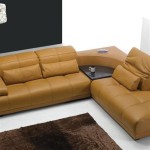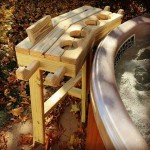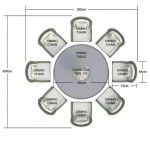How to Refinish a Dining Table
Refinishing a dining table can breathe new life into a cherished piece of furniture, transforming it from a worn and dated item into a stunning centerpiece. This process involves removing the old finish, repairing any damages, and applying a new protective coating. While it requires time, effort, and attention to detail, refinishing a dining table is a rewarding project that can save significant expense compared to purchasing a new table.
Before embarking on this project, careful consideration should be given to the type of finish currently on the table. Identifying the existing finish helps determine the appropriate removal method. Common finishes include varnish, lacquer, polyurethane, shellac, and wax. Generally, a test area using a solvent or stripper will reveal the type of finish. For example, a shellac finish will dissolve easily with denatured alcohol, while lacquer will dissolve with lacquer thinner. Polyurethane is typically resistant to milder solvents and requires a stronger stripper.
Safety is paramount when working with refinishing chemicals. Adequate ventilation is crucial, and a respirator specifically rated for organic vapors is essential to protect the respiratory system from harmful fumes. Eye protection, such as safety goggles, and chemical-resistant gloves are also necessary to prevent skin and eye irritation. It is recommended to work in a well-ventilated area, preferably outdoors or in a garage with the doors open, and to avoid breathing in the fumes directly.
Proper preparation is key to a successful refinishing project. This includes gathering the necessary tools and materials, creating a suitable workspace, and protecting the surrounding area. A detailed checklist will ensure all steps are followed meticulously.
Key Point 1: Stripping the Old Finish
The initial step in refinishing a dining table involves removing the existing finish. This can be achieved through chemical stripping, sanding, or a combination of both. Chemical stripping is generally recommended for intricate surfaces or tables with multiple layers of finish, as it can minimize damage to the wood. Sanding is more effective for flat surfaces and can be used after chemical stripping to remove any remaining residue.
When using a chemical stripper, apply a generous layer of the stripper to the surface of the table, following the manufacturer's instructions. Allow the stripper to dwell for the recommended time, which will vary depending on the type of stripper and the number of layers of finish. The finish will typically bubble or soften, making it easier to scrape away. Use a plastic scraper to remove the loosened finish, being careful not to gouge or scratch the wood. Avoid using metal scrapers, as they can damage the surface.
For intricate details or hard-to-reach areas, a stripping brush can be used to loosen the finish. After removing the bulk of the finish, clean the surface with mineral spirits to remove any remaining stripper residue. This step is crucial to ensure proper adhesion of the new finish. Multiple applications of stripper may be necessary for stubborn or thick finishes.
Once the majority of the old finish is removed, sanding becomes necessary to smooth the surface and prepare it for staining or topcoating. Start with a coarser grit sandpaper, such as 80 or 100 grit, to remove any remaining finish and level the surface. Progress to finer grits, such as 120, 150, and finally 220 grit, to create a smooth, even surface. Always sand in the direction of the wood grain to avoid creating scratches. Use a sanding block or orbital sander for larger surfaces and hand sanding for intricate details.
Between each sanding pass, vacuum the surface to remove dust and debris. This will prevent the sandpaper from becoming clogged and ensure a smoother finish. A tack cloth can also be used to remove any remaining dust particles. Proper sanding technique is essential for achieving a professional-looking result. Avoid applying excessive pressure, which can create uneven surfaces. Instead, let the sandpaper do the work.
If the table has veneer, extra caution is required during the sanding process. Veneer is a thin layer of wood adhered to a substrate, and excessive sanding can easily sand through it, exposing the underlying material. It's recommended to use a finer grit sandpaper and a light touch when sanding veneer. Chemical stripping is often a safer option for removing the finish from veneered surfaces.
Key Point 2: Repairing and Preparing the Wood
After the old finish is removed, the underlying wood can be assessed for any damages, such as scratches, dents, or chips. Repairing these imperfections is crucial for achieving a flawless finish. Minor scratches can often be removed with sanding, while deeper scratches or dents may require filling.
Wood filler is used to fill in dents, chips, and other imperfections. Choose a wood filler that matches the color of the wood as closely as possible. Apply the filler to the damaged area, slightly overfilling it to allow for sanding. Allow the filler to dry completely according to the manufacturer's instructions. Once dry, sand the filler flush with the surrounding surface, using progressively finer grits of sandpaper.
For larger repairs, such as replacing damaged veneer or filling larger gaps, wood patches or epoxy fillers may be necessary. Wood patches can be cut to fit the damaged area and glued in place. Epoxy fillers are stronger and more durable than traditional wood fillers and are suitable for repairing structural damage. Always follow the manufacturer's instructions when using wood patches or epoxy fillers.
After repairing any damages, thoroughly clean the surface of the table to remove any dust, debris, or filler residue. Vacuum the surface and wipe it down with a tack cloth. Inspect the surface carefully for any imperfections that may have been missed. Addressing these imperfections before applying the new finish will ensure a smoother, more professional-looking result.
If staining is desired, now is the time to apply the stain. Choose a stain color that enhances the natural beauty of the wood and complements the décor of the room. Apply the stain evenly, using a brush, rag, or sprayer. Allow the stain to dwell for the recommended time, and then wipe off any excess stain with a clean rag. The longer the stain dwells, the darker the color will be. Allow the stain to dry completely before applying the topcoat.
Before applying the final finish, it is crucial to seal the wood. A wood sealer helps to prevent the finish from penetrating the wood too deeply, resulting in an uneven or blotchy appearance. Apply a thin, even coat of wood sealer to the surface of the table, following the manufacturer's instructions. Allow the sealer to dry completely before proceeding to the next step. Lightly sand the sealed surface with a fine-grit sandpaper to create a smooth surface for the topcoat.
Key Point 3: Applying the New Finish
The final step in refinishing a dining table is applying the new finish. The choice of finish depends on the desired look and level of durability. Common finishes include polyurethane, varnish, lacquer, and water-based finishes. Polyurethane is a durable and water-resistant finish that is ideal for dining tables that will be exposed to spills and heavy use. Varnish is a traditional finish that provides a warm, rich look. Lacquer is a fast-drying finish that is often used for furniture. Water-based finishes are low-VOC and environmentally friendly.
Regardless of the type of finish chosen, it is important to apply it in thin, even coats. Multiple thin coats are better than one thick coat, as they are less likely to run or sag. Use a high-quality brush, sprayer, or foam applicator to apply the finish. Follow the manufacturer's instructions carefully, paying attention to the recommended drying time between coats.
When applying polyurethane, varnish, or lacquer, it is important to work in a well-ventilated area, as these finishes contain volatile organic compounds (VOCs). Wear a respirator and gloves to protect yourself from the fumes. Apply the finish in smooth, even strokes, overlapping each stroke slightly to avoid leaving streaks or gaps. Allow each coat to dry completely before applying the next coat. Lightly sand between coats with a fine-grit sandpaper to create a smooth surface for the next coat.
For water-based finishes, humidity and temperature can affect drying time. Aim for optimal conditions as recommended by the product manufacturer. These finishes tend to raise the wood grain, requiring a light sanding after the first coat to maintain smoothness. Several coats are often needed to achieve the desired level of protection and sheen.
After applying the final coat of finish, allow it to dry completely according to the manufacturer's instructions. This may take several days, depending on the type of finish. Avoid placing anything on the table until the finish is fully cured. Once the finish is cured, it can be buffed with a soft cloth to enhance the sheen. A final coat of wax can also be applied to protect the finish and make it easier to clean.
Careful consideration of the appropriate finish and adherence to application instructions are paramount for achieving a durable and aesthetically pleasing result. With patience and attention to detail, refinishing a dining table can transform the look and feel of a dining space.
Maintaining the refinished table involves regular cleaning with a soft, damp cloth. Avoid using harsh chemicals or abrasive cleaners, as these can damage the finish. Use placemats and coasters to protect the surface from spills and scratches. With proper care, a refinished dining table can provide years of enjoyment.

How To Refinish A Worn Out Dining Table

How To Refinish An Antique Dining Set The Wild Decoelis

How To Refinish A Dining Table Shades Of Blue Interiors

Refinishing A Dining Table Diy Beautify Creating Beauty At Home

How To Refinish A Table Sand And Sisal

How To Refinish A Dining Table Without Stripping The Original Coat

Dining Room Table Refinishing Services Antique Furniture Restoration By Rafael Oganyan Serving Boston Surrounding Areas

Diy Refinished Dining Table Top Redhead Can Decorate

How To Refinish Your Kitchen Table Sustainable Dish

Diy Refinished Kitchen Table And Chairs








